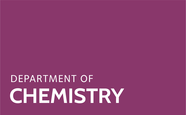The capacity of host cells to sustain or restrict virus infection is influenced by their proteome. Understanding the compendium of proteins defining cellular permissiveness is key to many questions in fundamental virology. Here, we apply a multiomic approach to determine the proteins that are associated with highly permissive, intermediate, and hostile cellular states. We observed two groups of differentially regulated genes: i) with robust changes in mRNA and protein levels, and ii) with protein/RNA discordances. Whereas many of the latter are classified as interferon stimulated genes (ISGs), most exhibit no antiviral effects in overexpression screens. This suggest that IFN-dependent protein changes can be better indicators of antiviral function than mRNA levels. Phosphoproteomics revealed an additional regulatory layer involving non-signalling proteins with altered phosphorylation. Indeed, we confirmed that several permissiveness-associated proteins with changes in abundance or phosphorylation regulate infection fitness. Altogether, our study provides a comprehensive and systematic map of the cellular alterations driving virus susceptibility.
Biotechnology
,1.1 Normal biological development and functioning
,3101 Biochemistry and Cell Biology
,3 Good Health and Well Being
,2.1 Biological and endogenous factors
,Infectious Diseases
,Infection
,Genetics
,31 Biological Sciences




